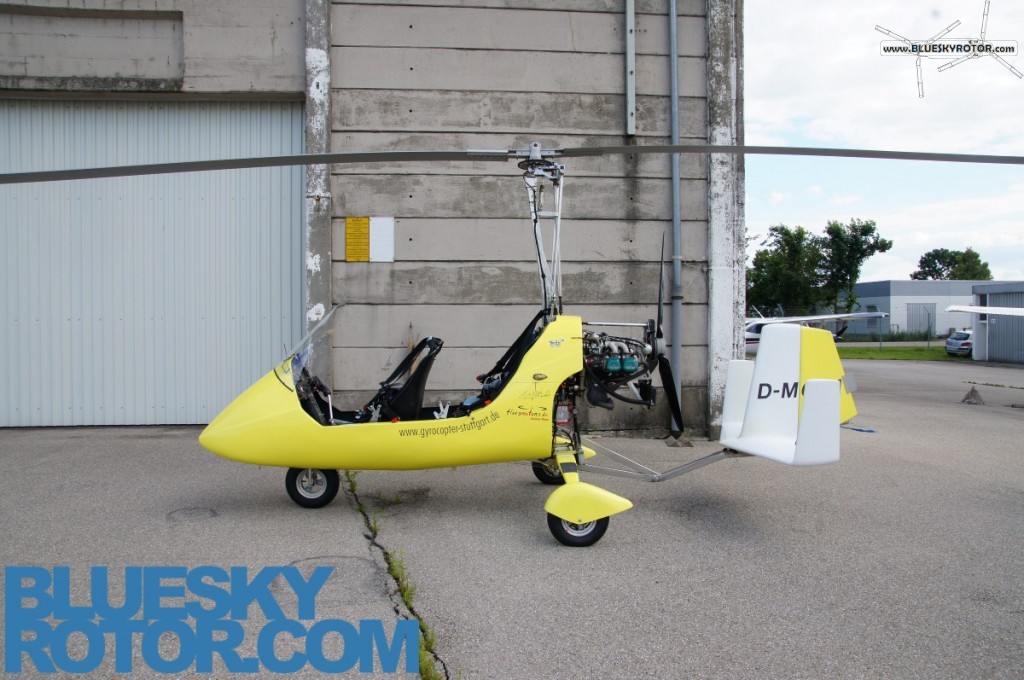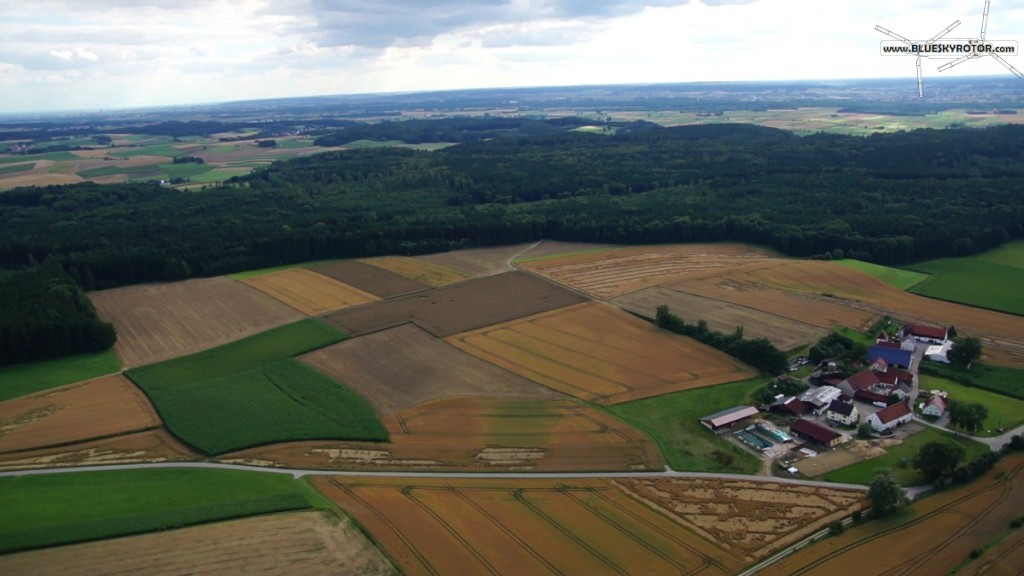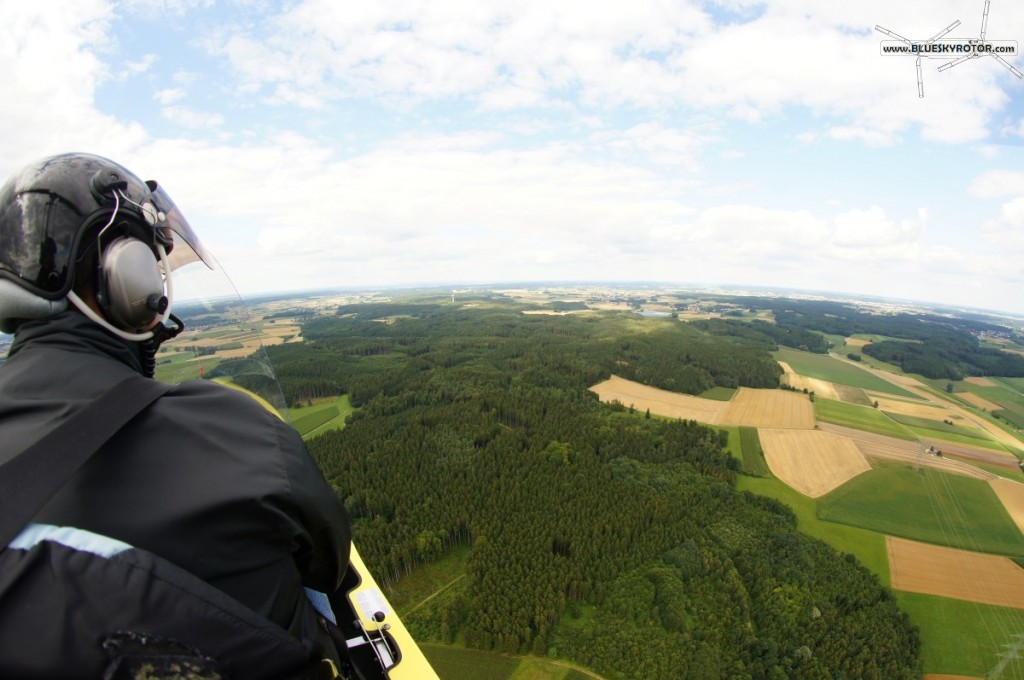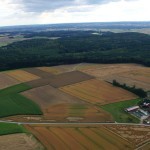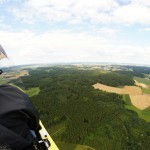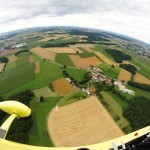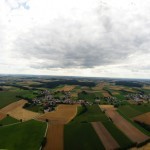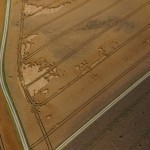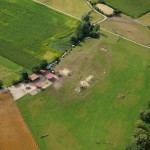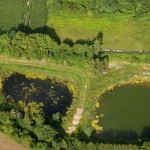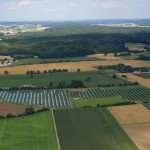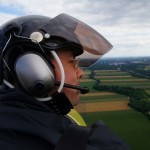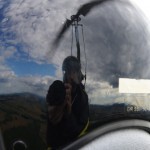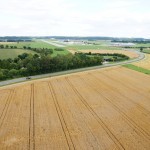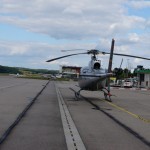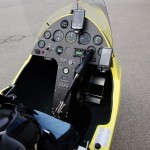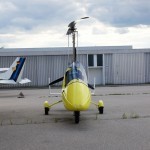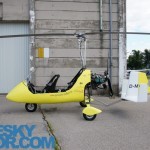
There was a great weather today, perfect for a flight with an autogyro and a wonderful light for nice photos.
I took off with Pascal from Augsburg airport in Bavaria. Air traffic was present, but not saturated, mainly composed of pilot students.
The autogyro MT-03 is a small aircraft manufactured in northern Germany. The pilot sits in the front with the instruments panel. The passenger has the possibility to use a flight rudder and pedals, which are mechanically linked to the pilot controls.
Starting is easy: the Rotax engine is ignited and the propeller starts to rotate. Immediately after, the aircraft is ready to proceed to the taxiway.
Once on the runway, the pilot can provide some torque from the engine to the main rotor. Not as for a helicopter, the main rotor rotation is generated by the air flow. You only need to launch the rotation, which is then sustained by the relative air speed. It actually replaces wings in a very efficient way.
Currently, the normal RPM number does not allow vertical take-off. You need a forward movement on a few meters in order to take altitude. However, the future aircraft should be able to always start vertically, the pilot said.
Cruise flight is approximately 57 kts. How does it feel?
It is not faster than a car. Flying with no roof is just as much fun as driving a convertible. There is an additional benefit though: you are too high to meet flies and midges. You could fly with no helmet without the risk of getting the “biker smile”.
Vibrations level is quite high but acceptable. It may become really unpleasant after a few flight hours, but for a 20 minutes flight, it is far from unbearable.
What about an engine failure?
Autogyros can glide well enough to land safely in case of an engine failure. “Let’s try this!”, he said.
Perhaps you can hear the propeller rotating less fast on the video. Of course it was windy and I didn’t have a real microphone with my camera. Nevertheless, you will barely notice anything. The descent rate increased a little bit, but stood around only a few feet/sec.
In case of incident, you still have time to quietly choose your emergency landing surface, execute the correct maneuver to align you aircraft, and you land.
At this moment, the pilot told me that he would have gone to the road below. We were at an altitude of approx. 1500 ft, which left us a 100% angle gliding slope.
We didn’t continue the “emergency demo” for too long in order to avoid scaring the people of the farm below…
Bavaria from the sky
You can now enjoy some few pictures taken during the flight.
- MT-03 autogyro side view
- if we ever had to make an emergency landing…
- Here is the pilot
- here is the passenger, also the owner of Blueskyrotor.com
- a real helicopter on the ground (http://www.blueskyrotor.com/performance/oneaircraft/Eurocopter/Ecureuil-AS350-B2)
- instruments panel, D-MOOM
- D-MOOM, front view
